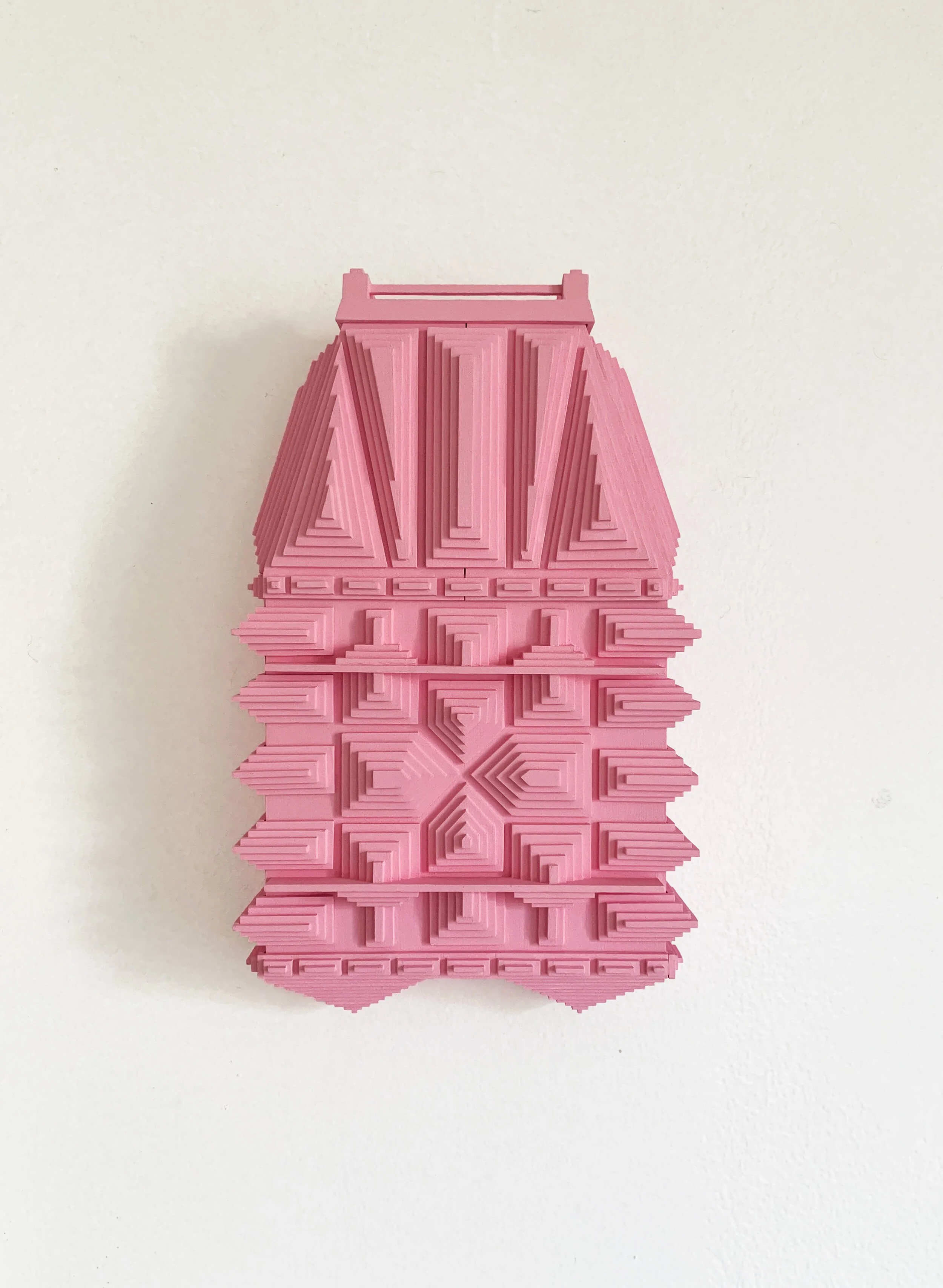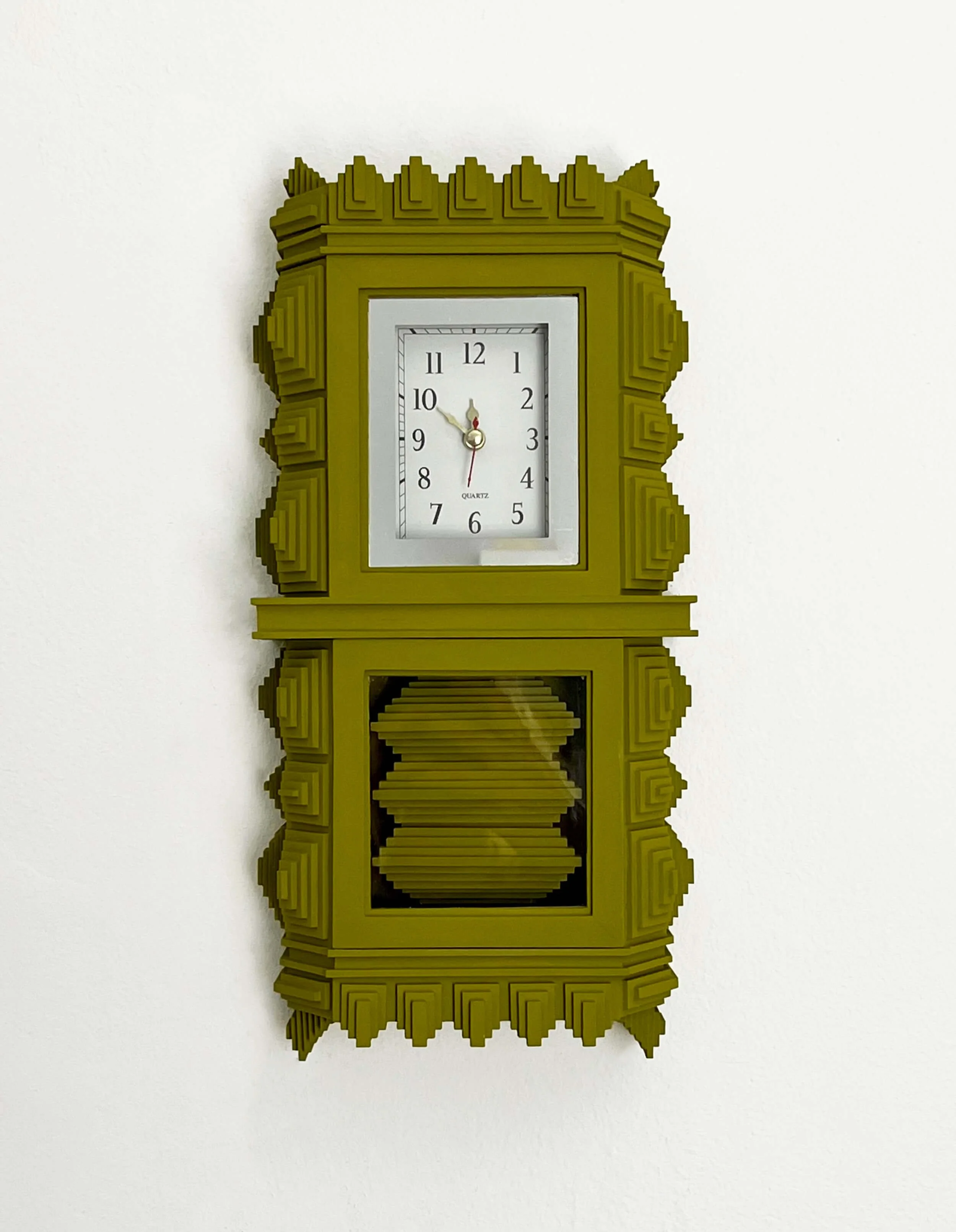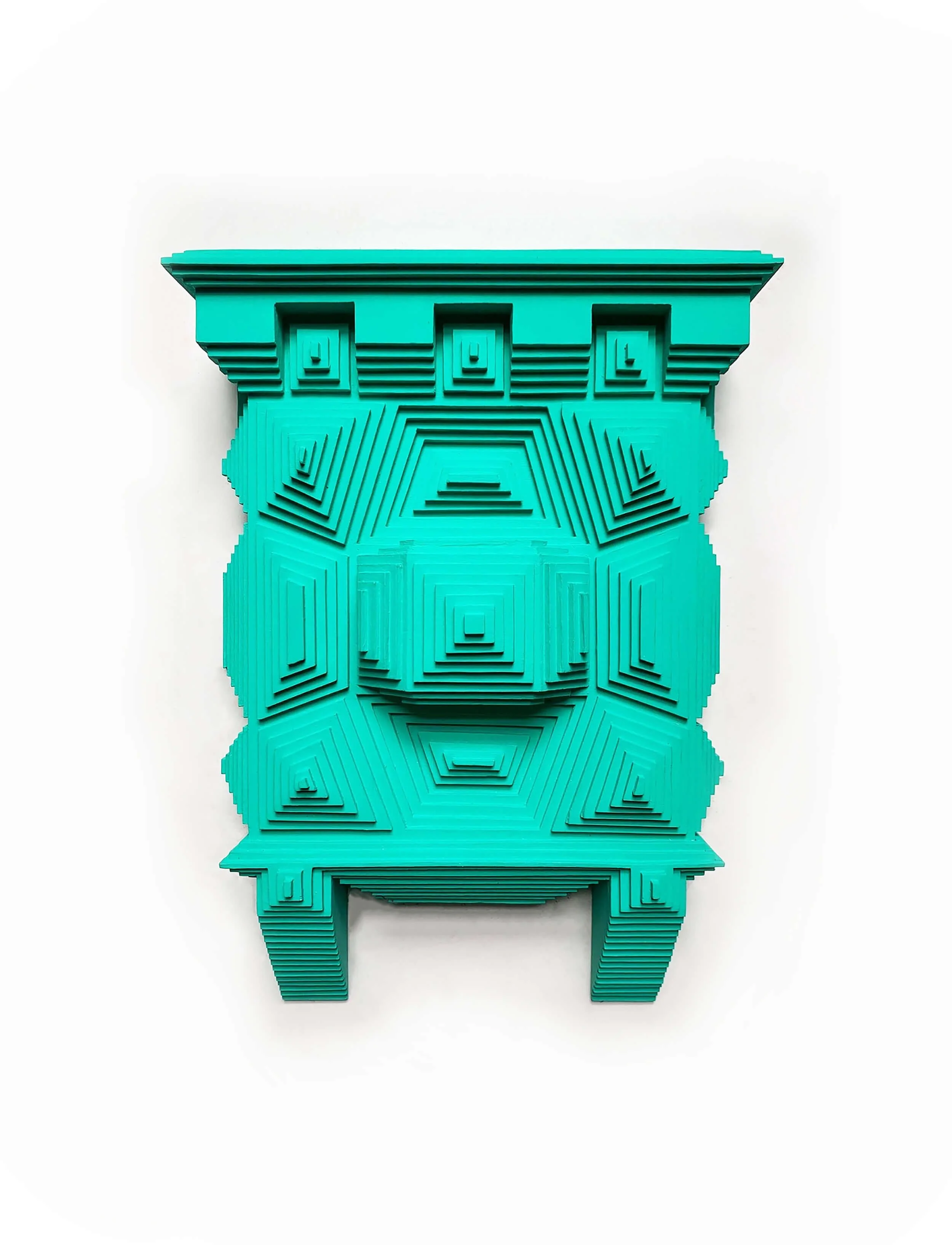Future Fair 2024
Turley is pleased to present artists Liu Kincheloe and Mack Sikora at Future Fair 2024. Together these colorful works explore the depths of devotion through subject matter as well as labored practice. Kincheloe’s meditative paintings activate the space through kaleidoscopic and symbolic gestures, while Sikora’s geometric reliquaries invoke questions of what we hold sacred.
FUTURE FAIR
May 1–May 4, 2024
Chelsea Industrial
535 W 28th Street, New York, NY 10001
Booth R10
VIP PREVIEW BY INVITATION
Wednesday, May 1, 2024, 3–8 PM
PUBLIC DAYS
Thursday, May 2, 2024, 12–7:30 PM
Friday, May 3, 2024, 12–7:30 PM
Saturday, May 4, 2024, 12–6 PM
Liu Kincheloe, Space as a Territory, 2024, ink and acrylic on mulberry paper, 25 x 22.75 x 1.5 inches (framed)
Liu Kincheloe
The term horror vacui, commonly understood as the fear of empty space, comes up a lot in relation to my work. It reminds me of the Art Historical narrative I learned in school that judged early works against a Greco-Roman ideal, and then almost skipped ahead to Renaissance art and Enlightenment Thinking. I remember learning about these arbitrary markers that were seen as the final pinnacles of development and a correction to any previous viewpoints,judging the artistic development of entire civilizations based on whether concepts like linear perspective were employed, or whether their figures showed signs of contrapposto. This struck me as hubris, as if the entire discipline might be a complex of cultural bias about rationalist thought in this refusal to take things on their own terms. I identified with the “othered” qualities and still do. I like mysticism. It seems natural to consider porosity and multiplicity as fundamental qualities of mind. I play with subverting figure/ground relationships as a meditation, training myself to look at things with less centrality and to recognize that what I decide is the important “figure” and relegated “ground” are a part of necessary mental functions that ultimately create equally arbitrary value judgments.
In a mandala or a pattern, the inter-relationship of form within pattern is special because adjacent forms co-create each other—positive form and negative space become interchangeable in daisy-chain. Interwoven designs always relate to textile because that is their highest form—where their making, warp and weft, further reiterate the design. These sorts of patterns can feel impenetrable because of the way we are trained to relate to things, and that there isn’t a heavy, obvious priority. I employ my own handedness with its irregularity and error to open up these patterns to create entry into the work, but I feel that this way of looking might be something worth getting used to. Chöngyam Trungpa speaks of the mandala effect, saying that “It is a way of looking at situations in terms of relativity: if this exists, that exists; if that exists, this exists. Things exist interdependently and that interdependent existence of things happens as orderly chaos.”
Trungpa understands beauty in terms of “a ground that is extremely awake and alert” and not necessarily pleasurable. I emphasize details and loading in adjacent colors to create as much reverberation as possible and to foster a sense of aliveness and intimacy. I have an almost compulsive desire to clarify or save tiny formal inventions that unintentionally appear in the process, to witness them in an almost animistic respect. It is reflective of a belief that we know things most deeply by relating to them, as opposed to analyzing them. For me, art-making is a practicing ground for cultivating certain mental states, a meditative space to clear out social conditioning and return to intuitive knowing.
With the paintings, I like to collaborate with chance operations to create the imagery. The structural bones of the paintings often start with a reflected motif that is unfolded in mirror symmetry—where new, unplanned forms appear in the axis of reflection. Symmetry unfolds the original image into a new image, and new forms are found and culled in this process. I tend to pick instances that arouse my imagination and forms that can potentially call up multiple associations in representation. Some geometric patterns show up in strikingly different images, like characters. The geometric structure and repetition give more significance to idiosyncratic marks and forms, and make them more viewable. The way our brains map stimuli, we naturally see closed forms more readily, so the geometric structure allows more formal play and detail to exist all over in a way that can be seen, not lost to the mental filtering of background noise.
Sometimes I select a tiny section from an existing religious painting as a starting point for a painting—like a seed to be amplified. I love symbolic systems (religious, shamanic or alchemical) that encode meaning into basic compositional elements and principles that allow a layer of play in meaning-making rather than viewing formalism as completely emptied. I am fascinated with sigils, yantras, crests, runes and other historical examples where visual stand-ins become calling cards for specific energetic signatures. This work imagines everything as conscious. It imagines that your own thought-forms might have their own consciousness and life without you.
Painting for me is a kind of devotional process and play. A lot of my work is imaginary imagery about mythical and cosmological ideas and beings. How do you picture some animating energy in constant palpitating transformation? Or visualize the energy of storied guides or beings like Grandma Spider, Vajrapani or the World Tree? How do we picture mundane acts of meditating? With the drawings, I like to play with proto-language symbols, layering them with abstraction and pattern, as a way of visualizing how we hold elements and shadows in our psychic terrain.
Liu Kincheloe, Upon Biting the Apple, 2022, acrylic on canvas, 53.5 x 49 inches
Liu Kincheloe, World Tree, 2024, acrylic on canvas, 49.5 x 53 inches
Liu Kincheloe (b. 1985 in Torrance, CA; lives in works in Brooklyn, NY) received an MFA in Painting and Drawing from Pratt Institute (2012), and a BFA Studio Art (2009) and a Psychology BA (2009) from The University of Texas at Austin. Liu was a resident at the Skowhegan School of Painting and Sculpture in 2013, returned in 2021 for the Skowhegan Alumni Summer, and was recently a resident at Pratt>Forward in 2024.
Mack Sikora, Reliquary 7 (relic undisclosed – 2017–2019), 2023, Flashe and acrylic on basswood, 11.5 x 7 x 2.5 inches
Mack Sikora
I love love. I love being loved. I love being in love. I might even be falling in love with you right now.
While love itself is immaterial, the stuff you collect along the way – texts, letters, mix tapes, playlists – all exist as physical proof that love was at one point found and potentially, inevitably, lost. But what do you do with the physical remains of a relationship that has reached its end? There comes a day when the body must be buried. The “stuff” must be put to bed.
A rational person might throw the objects of past relationships away, whether in the trash or a box destined for the closet. I, however, choose to enshrine the evidence of your love for me in wall mounted reliquaries, safely tucked away but never forgotten.
Each piece holds a relic of love, entombed under layers of wood, hidden behind intricately crafted doors and walls, invisible but protected. The relics are undisclosed, as is the path to their discovery; a puzzle to solve. Are you interested?
Mack Sikora, Reliquary 8 (relic undisclosed – 2015–2020), 2023, Flashe and acrylic on basswood, plexi, and found clock, 13 x 7 x 3.5 inches
Mack Sikora (b. 1994 Pasadena, CA) lives and works in Brooklyn, New York. In 2020 she graduated with an MFA in Painting from Boston University, and received her BA in Art and Art History from DePauw University in 2017. Two-person exhibitions include Sneak Show with Davis Arney, Greene House Gallery, New York, NY (2022) and Is This Okay? with Julian MacMillan, Gallery 5, Boston, MA (2019). Selected group exhibitions include The Sun Through Closed Eyes, Greene House Gallery, Brooklyn, NY (2023); is it a dream or a memory?, Marathon, Ellenville, NY (2023); Superbird, Paradice Palase, New York, NY (2023); Trite and True, Dream Clinic Project Space, Cincinnati, OH (2022) and MAIL, OLYMPIA, New York, NY (2020). She was recently featured in Patron Parlor with Paradise Palace at Future Fair, New York, NY (2023).
Mack Sikora, Adam, 2024
Installation photography by KC Crow Maddux

















